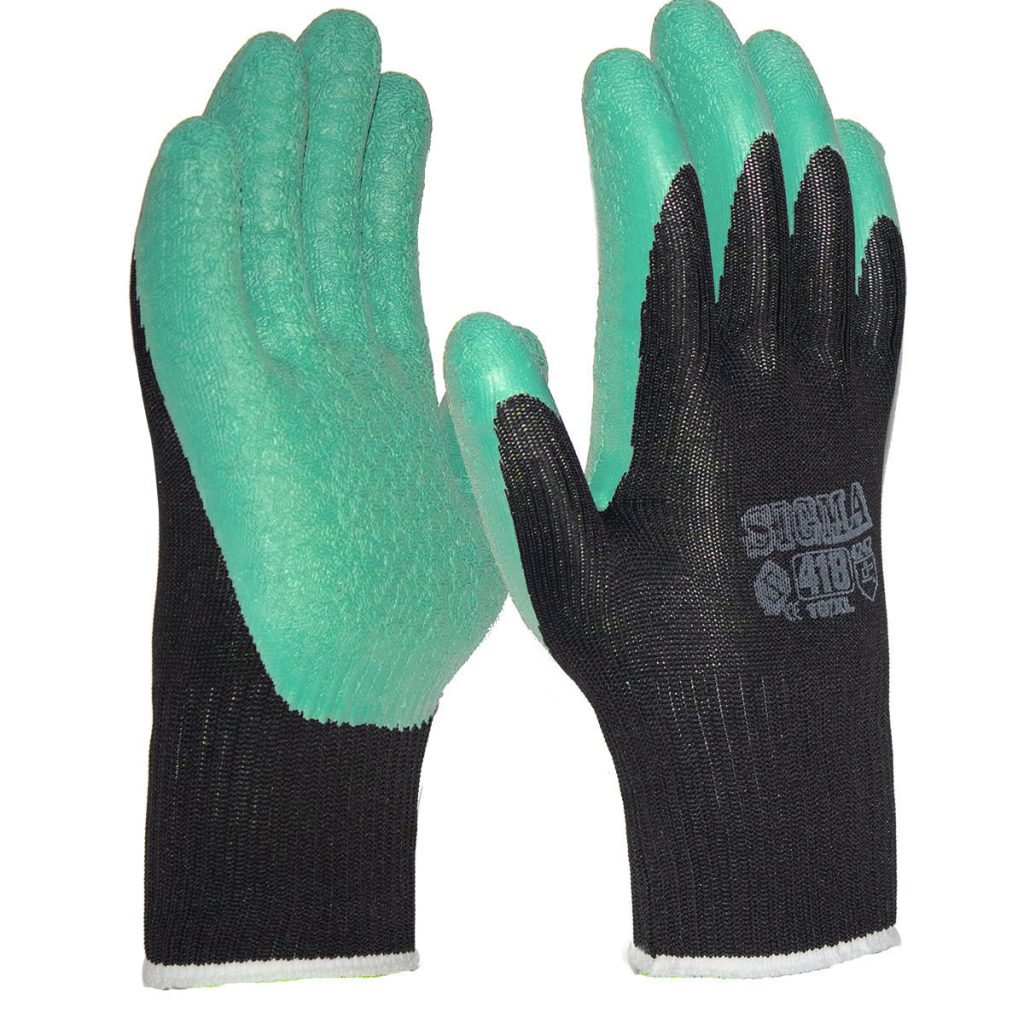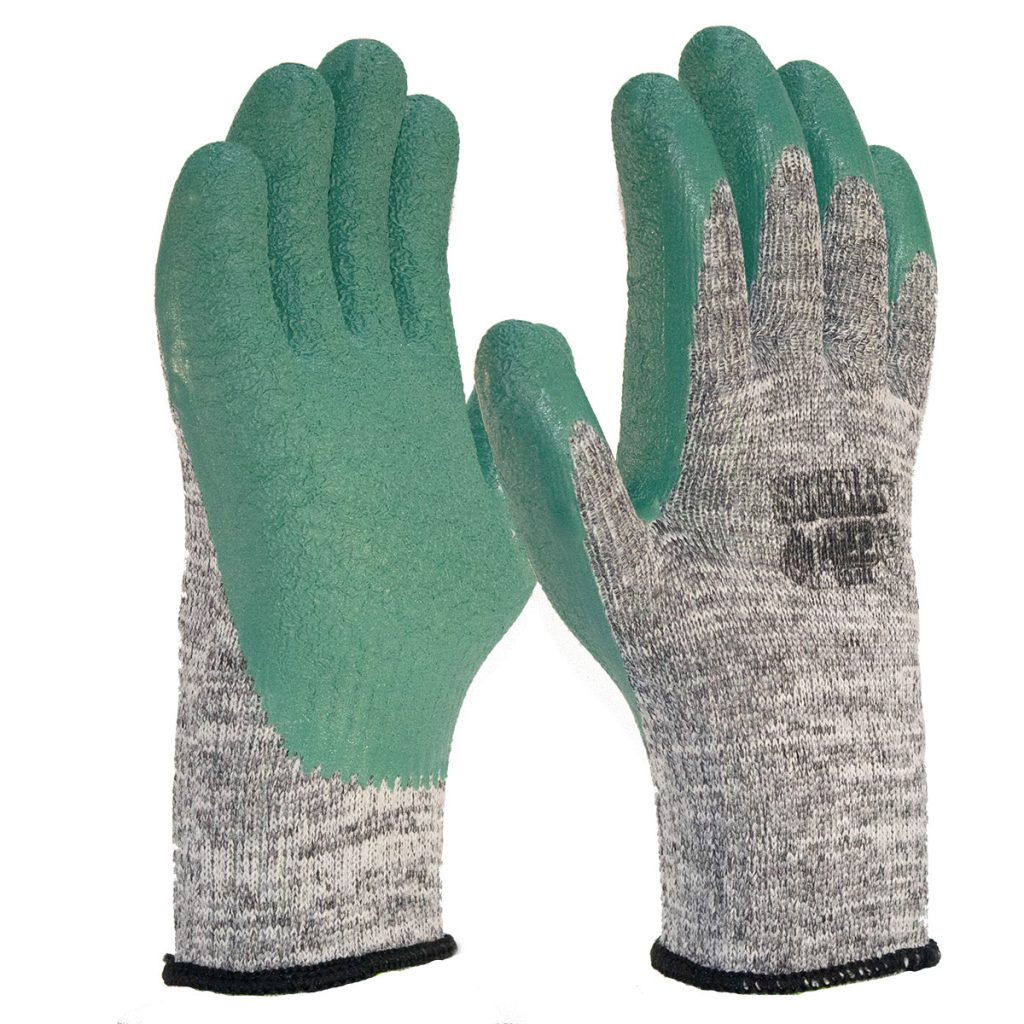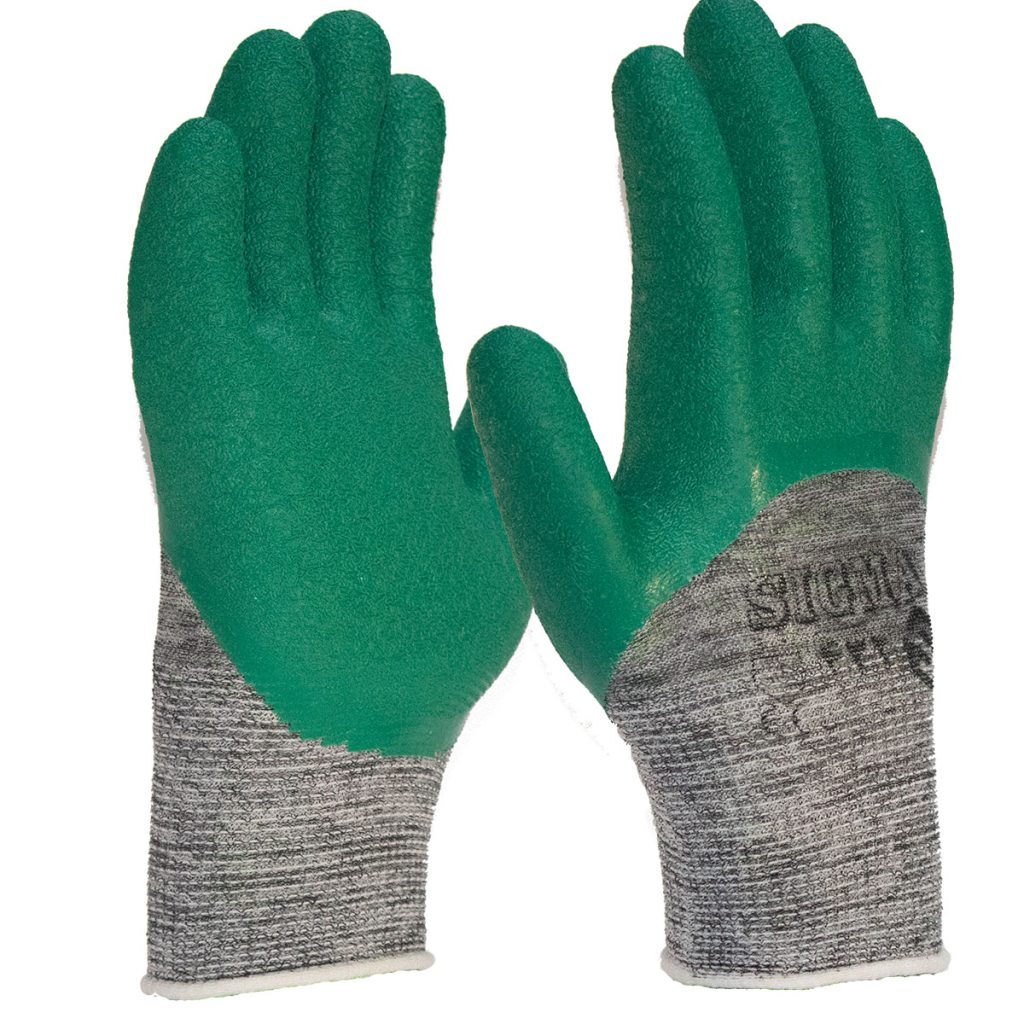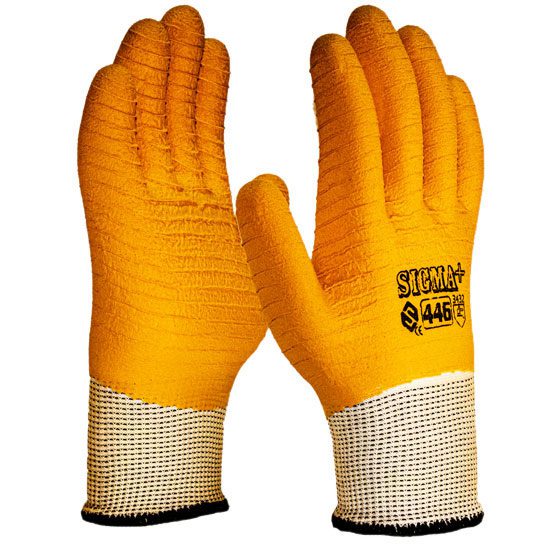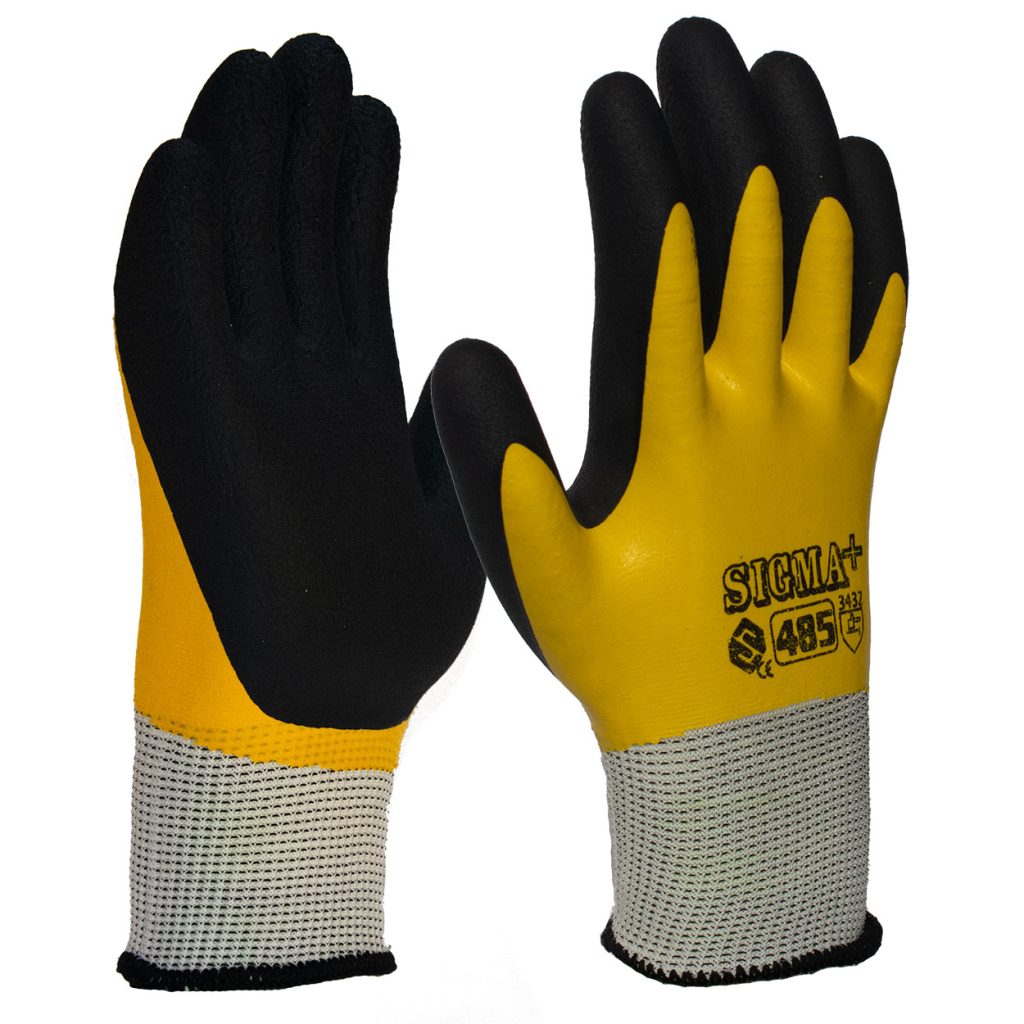Mining gloves
Coated Mining Work Gloves

Coated mining work gloves are essential personal protective equipment (PPE) for miners and workers in the mining industry. These gloves are designed to provide a high level of grip, cut resistance, and abrasion resistance, ensuring the safety and comfort of workers in various mining applications.
Some key features of coated mining work gloves include:
- Material: A combination of materials like synthetic fibers, leather, and spandex can be used to make these gloves. The choice of material depends on the level of protection, durability, and comfort required for a specific task.
- Coating: A specialized coating, such as nitrile, latex, or polyurethane, is applied to the palm and fingers to enhance grip and provide additional protection against cuts, punctures, and abrasions. The type of coating depends on the specific needs of the mining environment and the tasks being performed.
- Cut Resistance: Mining gloves should offer a high level of cut resistance to protect workers’ hands from sharp objects and materials. Gloves are often rated on a scale of A1 to A9, with A9 providing the highest level of cut resistance.
- Abrasion Resistance: Mining work gloves should be able to withstand abrasion from rough surfaces and materials, ensuring durability and long-lasting protection.
- Dexterity and Comfort: The gloves should provide a good balance between protection and dexterity so that workers can perform tasks efficiently and comfortably. The fit, flexibility, and breathability of the gloves play a significant role in providing comfort.
- Cuff Design: The cuff design can vary, including slip-on, hook and loop closure, or knit wrists, depending on the desired level of wrist support and protection.
Some popular brands that manufacture coated mining work gloves include Ansell, HexArmor, Showa, and Mechanix Wear. When selecting the right pair of gloves for your mining tasks, consider the specific hazards and requirements of your work environment to ensure optimal protection and performance.
Key Elements and Features of The Best Mining Gloves
When it comes to mining coated gloves, there are a few key features that are important to consider:
1. Cut resistance: Mining work often involves handling sharp or abrasive materials, so gloves with a high level of cut resistance are essential for protecting the hands from cuts and punctures.
2. Grip: A good grip is critical for handling tools and equipment safely and efficiently. Look for gloves with a textured coating, such as nitrile or latex, that provides a firm grip even in wet or oily conditions.
3. Durability: Mining work can be tough on gloves, so it’s important to choose gloves that are durable and can withstand constant wear and tear. Look for gloves made from high-quality materials that are designed to last.
4. Comfort: Comfort is important for ensuring that workers can wear the gloves for extended periods without experiencing discomfort or fatigue. Look for gloves that are breathable and provide a comfortable fit.
5. Chemical resistance: Many mining operations involve exposure to chemicals and other hazardous substances. Gloves with a chemical-resistant coating, such as nitrile or neoprene, can help protect the hands from chemical exposure.
Overall, the best mining coated gloves should provide a high level of protection, grip, durability, and comfort, while also being resistant to chemicals and other hazards commonly found in mining environments.
Application of Mining Coated Gloves
Mining coated gloves are designed to provide protection and grip for workers in mining environments. They can be used in a variety of applications, including:
1. Handling sharp or abrasive materials: Coated gloves with a high level of cut resistance can protect the hands from cuts, punctures, and abrasions when handling sharp or abrasive materials, such as metal parts, rocks, and ores.
2. Operating machinery and equipment: Mining coated gloves can provide a firm grip on tools and equipment, such as shovels, pickaxes, and drilling equipment, which can improve safety and efficiency.
3. Handling chemicals: Many mining operations involve exposure to chemicals, such as acids, solvents, and oils, which can be hazardous to the skin. Coated gloves with a chemical-resistant coating, such as nitrile or neoprene, can protect the hands from chemical exposure.
4. Working in wet or oily conditions: Coated gloves with a textured coating, such as nitrile or latex, can provide a firm grip even in wet or oily conditions, which can help prevent slips and falls.
Overall, mining coated gloves are an essential piece of personal protective equipment (PPE) for workers in mining environments, helping to protect the hands from a variety of hazards and improving safety and efficiency on the job.
Are there any other types of PPE that are commonly used in mining environments?
Yes, there are several types of personal protective equipment (PPE) that are commonly used in mining environments, in addition to coated gloves. These include:
1. Hard hats: Hard hats are designed to protect the head from falling objects and impacts, which are common hazards in mining environments.
2. Safety glasses or goggles: Eye protection is necessary in mining environments to prevent eye injuries from flying debris, dust, or chemicals.
3. Respirators: Respirators can protect workers from inhaling hazardous substances, such as dust, gases, and fumes, that are commonly found in mining environments.
4. Hearing protection: Exposure to loud noise from mining equipment and machinery can cause hearing loss, so hearing protection, such as earplugs or earmuffs, is necessary.
5. High-visibility clothing: In areas where heavy machinery or vehicles are in use, high-visibility clothing can help workers to be seen and avoid accidents.
6. Safety boots: Safety boots with steel-toe caps and slip-resistant soles can help protect the feet from heavy objects, sharp materials, and slips and falls.
These types of PPE are essential for protecting workers in mining environments from a variety of hazards and ensuring their safety on the job. Employers have a responsibility to provide appropriate PPE and ensure that workers use it correctly and consistently.
Proper Care and Maintenance of Mining Coated Gloves
Proper care and maintenance can help extend the lifespan of mining coated gloves and keep them in good condition. Here are some tips to keep in mind:
1. Store gloves properly: When not in use, gloves should be stored in a cool, dry place away from direct sunlight and heat sources. Avoid storing gloves in damp or humid areas, as this can cause the coating to break down.
2. Clean gloves regularly: Gloves should be cleaned regularly to remove dirt, grime, and other contaminants that can cause the coating to deteriorate. Use a mild detergent and warm water to clean the gloves, and avoid using harsh chemicals or solvents.
3. Inspect gloves before use: Before using gloves, inspect them for signs of wear and tear, such as holes, cuts, or punctures. Damaged gloves should be replaced immediately to ensure that they provide adequate protection.
4. Avoid exposing gloves to chemicals: Chemicals can break down the coating on gloves, so it’s important to avoid exposing them to chemicals whenever possible. If gloves must be used in areas where chemicals are present, choose gloves with a chemical-resistant coating.
5. Don’t use gloves for tasks they’re not designed for: Mining coated gloves are designed for specific tasks and may not be suitable for all types of work. Using gloves for tasks they’re not intended for can cause them to wear out more quickly and may also compromise their protective qualities.
By following these tips, workers can help to extend the lifespan of mining coated gloves and ensure that they provide adequate protection over time.

